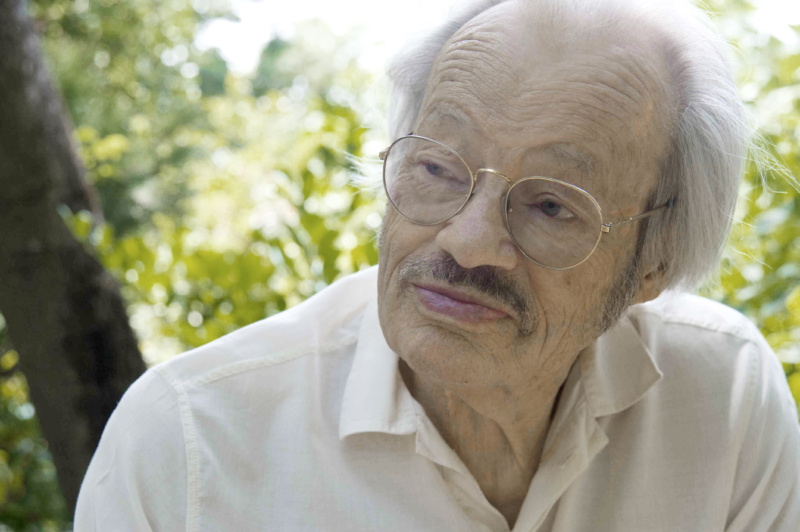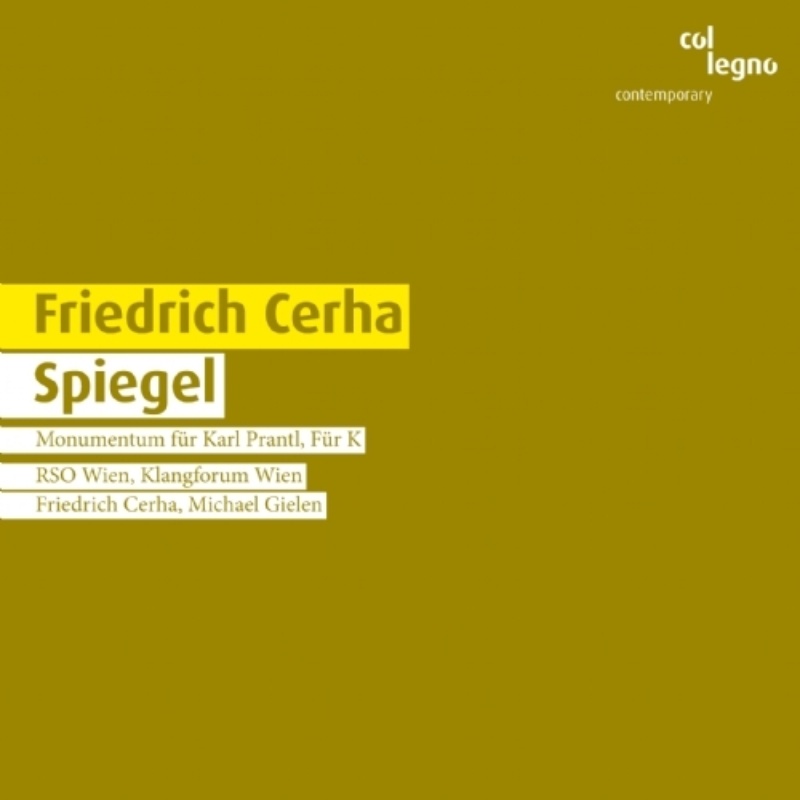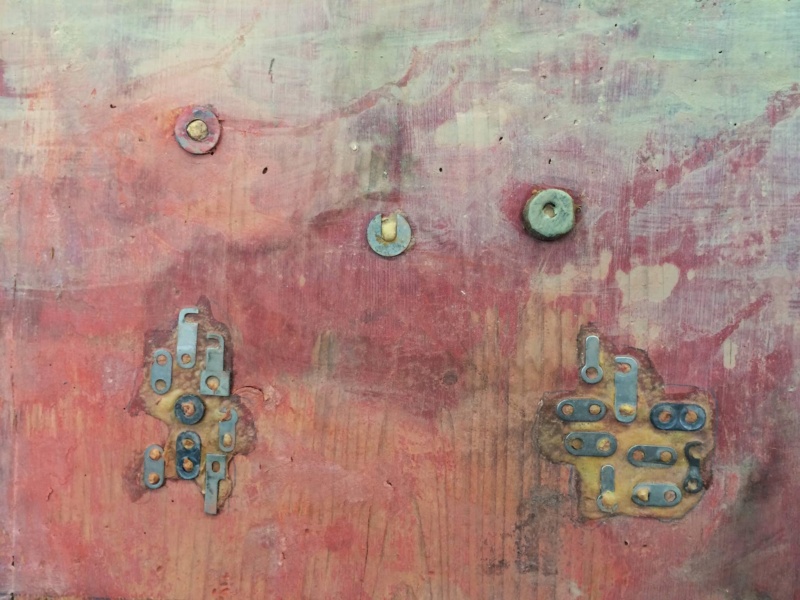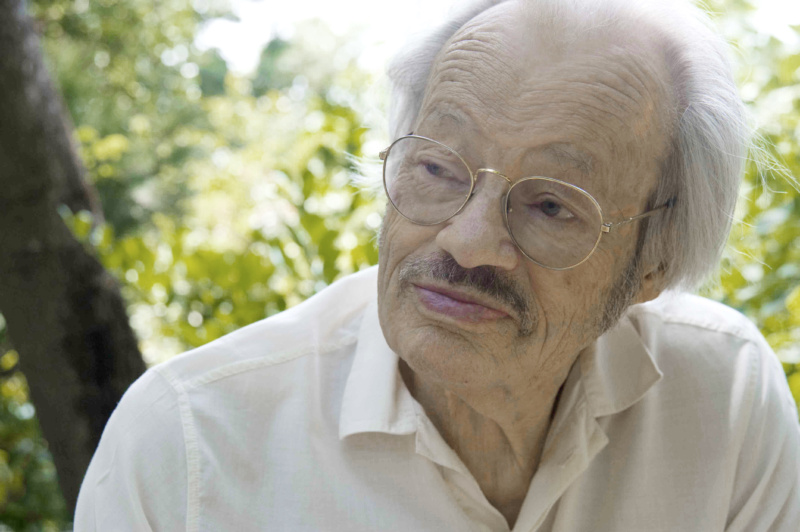With over 900 paintings and collages as well as sculptural works produced over the many decades of his musical career, the composer leads a veritable double life. In Donaueschingen both sides of the artist Friedrich Cerha were on display.
During the opening concert, his new orchestral piece Nacht (“Night”) received its world premiere by the SWR Symphony Orchestra under Emilio Pomàrico. In addition, his visual art was featured in an exhibition alongside that of several other composers, and this was only the fourth time that it was presented to the public. In the following text, written for the third of these exhibitions which was held in the Bavarian town of Waidhofen in 2012, the composer describes his art.
Even as a child I was drawn to the little things that surround us, and I collected all that I found beautiful and appealing: stones, roots, old wood, pieces of metal, seeds, tree barks, coins – and I lived among them. Nowadays, people are not as mindful of their surroundings. Many things are used without further regard, and carelessly discarded afterwards.
Very early on, I tried to incorporate these objects into my visual works, even before I had ever heard anything about object art. I have been a visual artist for virtually my entire life, except between the ages of sixteen and twenty-two. The reason was not the war but my art teacher at school who decided I lacked talent after I failed to capture a rock formation in true perspective. That affected me so deeply that I fell “silent”.
After the war (during which I deserted twice as a soldier) I began to paint in watercolours. In the 1950s I had close ties with the Art Club where I played contemporary music as a violinist with Hans Kann. That was the beginning of a lifelong friendship with Hans Fruhmann and Karl Prantl which had a big influence on me.
1958 was an important year for me. I was chosen to represent the Second Viennese School (Schoenberg, Webern, Berg) at the Expo in Brussels and had the chance to see the works by painters of other nationalities. I immersed myself in the French art of the 1940s and 1950s and learned about African painting and sculpting traditions. I was fascinated by the montages of Kurt Schwitters – I felt very close to him – and I admired the works of Bracusi, Pevsner and Naum Gabo. In 1963, I began to paint on wood and integrate metal, stones and objects that I found into my paintings, and in the 1970s I started to work in stone, too.
There are some points of contact between my visual art and my music. Back when I was working on act three of Berg’s Lulu there was a painting, Jack the Ripper, and two paintings from the time of my opera Baal, Baal’s Women and Baal. At one time, my visual art also inspired me musically, with the ensemble piece Catalogue des objets trouvées.
During the almost 50 years of my creative life, ideas have been developed, transformed, resumed and re-created, as one would expect. The selection for the current exhibition focuses on geometric arrangements which recur in different ways through different periods. Beside these rigid arrangements, many of my paintings also betray a remnant of imprecision that I welcome and that matters to me because it bears witness to the creative act and natural human imperfection.
Throughout my long life, I never had careerist ambitions with my art. Creative work has always been an end in itself. I have to work, just as I have to breathe. Music must be performed in order to be perceived, and these performances brought about something of an international career in my case. My visual art has been publicly shown on only two occasions so far, once in Salzburg and once in Graz, and both times without my initiative. But I appreciate the opportunity to make it accessible to those who are interested.





